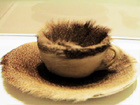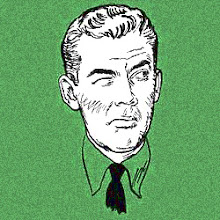
FILMS
Iannis Xenakis, NEG-ALE (1960)
Cioni Carpi, Punto e contrapunto (1960)
Joseph Cornell, Gnir Rednow (1960)
Ed van der Eisken, Handen (1960)
Stan VanDerBeek, Achooo Mr. Kerrooschev (1960)
Stan VanDerBeek, The Smiling Workman (1960)
Stan VanDerBeek, Blacks and Whites, Days and Nights (1960)
Stan VanDerBeek, Skullduggery Part II (1960-1961)
Harry Smith, Heaven and Earth Magic (1950-1960)
Alexander Kluge, Brutality in Stone (1960)
Norman McLaren and Evelyn Lambart, Lines: Vertical (1960)
Richard Myers, The Path (1960)
Nobuhiko Obayashi, Dandanko (1960)
Nobuhiko Obayashi, E no Naka no Shouja (1960)
Ken Jacobs, Little Stabs at Happiness (1969)
TEXT
Gustav Metzger, Auto-Destructive Art Manifesto (1960)
Jose Lino Grunewald, aromamora; falo; sempre ceder (all 1960)
Friedrich Achleitner, o-i-study; ouch; alas! (all 1960)
John Cage, Tacet (1960)
Louis Zukofsky, Julia's Wild (1960)
Eugen Gomringer, The Poem as Functional Object (1960)
Luis Bunuel, A Statement (1960)
SOUND
Files in History of Electronic/Electroacoustic Music (1937-2001)
Berio, Luciano - "Momenti" (1960)
Clementi, Aldo - "Collage II" (1960)
Kagel, Maurizio - "Transicion I" (1958-1960)
Maderna, Bruno - "Dimensioni II (Invenzione su una Voce)" (1960)
Mathews, Max - "Numerology" (1960)
Nono, Luigi - "Omaggio a Emilio Vedova" (1960)
Pousseur, Henri - "Electre" (1960)
Xenakis, Iannis - "Orient-Occident" (1960)
Stockhausen, Karlheinz - "Kontakte" (1958-1960)
Brion Gysin, Mektoub: Recordings 1960-1981 Link
Salvador Dali, Salvador Dali Speaks
Richard Maxfield, Pastoral Symphony and Amazing Grace
William Carlos Williams, Interviews with Walter Sutton, Recorded October 11 & 20; November 3 & 15, 1960
Above: early photograph of Ken Jacobs.

 Is '60 the moment when the end of the end of the Old Left had been reached and the New Left began to emerge? Is it the final ascendancy, in certain scenes at least, of poetic postmodernity? Surely the publication of Donald Allen's The New American Poetry that year suggests this, but then again--once again--we look back on "New" here and see continuity. The rhetoric of the Kennedy-Nixon contest made much less of a dent than everyone (at the time as well as since) claimed, so one wonders why were such great claims made?
Is '60 the moment when the end of the end of the Old Left had been reached and the New Left began to emerge? Is it the final ascendancy, in certain scenes at least, of poetic postmodernity? Surely the publication of Donald Allen's The New American Poetry that year suggests this, but then again--once again--we look back on "New" here and see continuity. The rhetoric of the Kennedy-Nixon contest made much less of a dent than everyone (at the time as well as since) claimed, so one wonders why were such great claims made?  Had we come to expect "1960" to be truly ubiquitously modern in a way that the 1950s really were not--not quite? And what specifically does "modern" mean in the Kennedyesque talk then and now about the torch being passed to a new generation, etc.? The First Lady really meant "modernist" when Camelotians said "modern." What about the others across the new young cultural leadership? I've been surprised by how frequently the
Had we come to expect "1960" to be truly ubiquitously modern in a way that the 1950s really were not--not quite? And what specifically does "modern" mean in the Kennedyesque talk then and now about the torch being passed to a new generation, etc.? The First Lady really meant "modernist" when Camelotians said "modern." What about the others across the new young cultural leadership? I've been surprised by how frequently the  "Beat movement" was covered in 1960 in the mainstream press. I was expecting a fair measure but I've found tonnage. 1960 was the year when the figure of the beat was beginning to find acceptance, although still 80% of these stories are mocking, rebels-without-cause condescension. For anyone whose analysis made an impact nationally, do these antipolitical adolescents count as part of the "new young cultural leadership"? No, but rather than the two being opposites, they fall along a Continuum of the New American. Now that's a change for '60.
"Beat movement" was covered in 1960 in the mainstream press. I was expecting a fair measure but I've found tonnage. 1960 was the year when the figure of the beat was beginning to find acceptance, although still 80% of these stories are mocking, rebels-without-cause condescension. For anyone whose analysis made an impact nationally, do these antipolitical adolescents count as part of the "new young cultural leadership"? No, but rather than the two being opposites, they fall along a Continuum of the New American. Now that's a change for '60.







